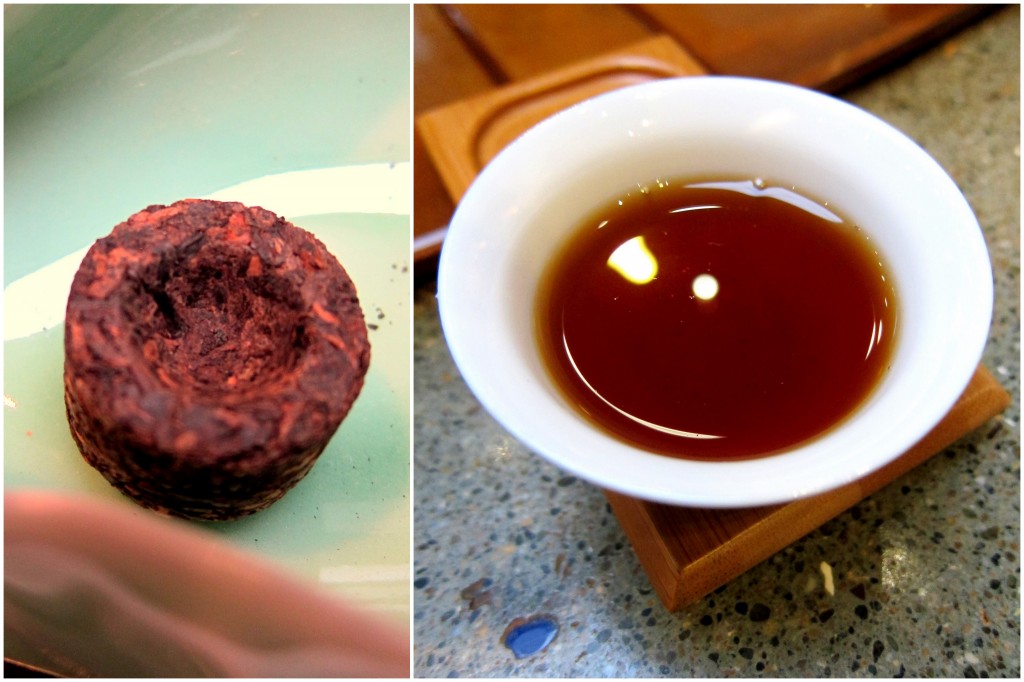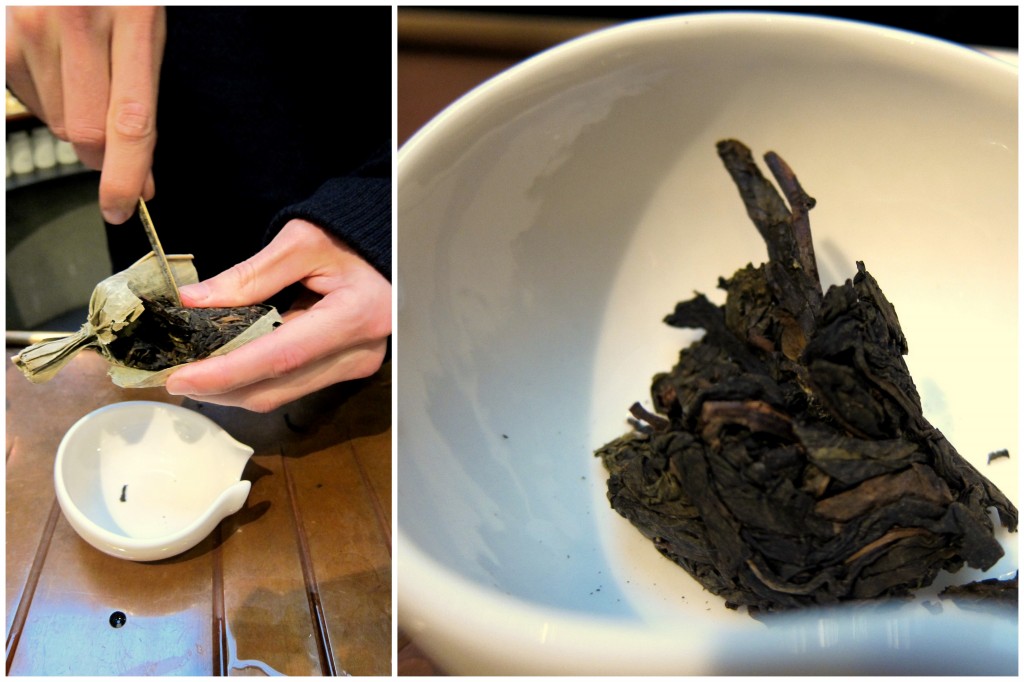Back then Darius told us that there are 2 main tea varietals: Camellia sinensis sinensis and Camellia sinensis puer. Obviously, pu’er tea comes from the latter. It’s the only kind of fermented tea. Fermentation and oxidation are two different things: white, green, oolong, Chinese red (which American call “black tea”) are different shades of oxidation with no fermentation at all, whereas pu’er is fermented and stands in its own category. There’s no oxidation grade for pu’er because the natural oxidation process is not sealed in for pu’er as it is for the other kinds, so as the pu’er ages, it gets a bit more oxidized.
History behind the pu’er: tea carriers compressed the tea leaves together for easy shipping, but at the end of a long journey, they found that the tea changed flavors for the better. The reason: the very high humidity during the day and the very dry atmosphere at night (and the high density of tea) set up the right contrasting environment for a bacterium to process the leaves, which results in fermentation. From then on, they purposefully compress the tea and let it ferment on its own. The longer it ages, the more appreciated it is. Sam said he doesn’t know the minimum fermentation time for a pu’er to be ready for drinking, maybe there isn’t a minimum, as evident by the green (unfermented) puer that we tried later tonight.
Pu’er is good for digestion, so it often accompanies oily dishes like dimsum. We used normal tea cups tonight, but there’s also the so-called pu’er cup, which is about 3/5 the height of the normal cup and visibly wider. More surface area, so it cools faster (puer is steeped at 205 F, like red tea), but because pu’er is more viscous than oolong or Chinese red tea, the current also forms a darker ring in this cup, and I guess it looks nice? (Personally, the visual effect makes no difference to my tasting.)
Pu’er: do need to be rinsed before steeping.
1. Small Nugget Pu’er

This one we tried was young, only 1 year old. It comes as a nugget wrapped in thin paper. It smells mossy, wet (like the ground during the rain) and a bit like overripe fruit. That must be the fermented smell.
The first steep takes 30-40 s. It can go for about 8 steeps. The first steep came out with a dark amber color like that of hong cha, but as the nugget really broke up, the second to fifth steeps were as dark as coffee.
The taste: thick, muddy, bland with a sweet undertone, like the sweetness of jicama. There’s no leafy taste. I’m not so convinced with the digestion quality because drinking this pu’er gave me a heavy feeling as if I were eating liquid food. I’m not too enthralled by it.
2. Fragrant Leaf Green Pu’er:

The name indicates that it is not fermented at all (or only negligibly little). It comes wrapped in a kind of dried monocot leaf that resembles banana leaf or bamboo leaf. I asked Sam, but he said that Winnie Yu (Teance’s owner) only said that it’s a leaf native to Yunan, where this tea comes from. It’s not the leaf that is used to wrap sticky rice dumplings, that we know, so banana leaf and bamboo leaf are out. The tea smells and tastes distinctively like pandan leaf (lá dứa in Vietnamese): sweet, fragrant, gentle. Pandan leaf extract is used all over in Vietnamese desserts, and Yunnan is right above Vietnam, so my best guess for this “fragrant leaf” is the pandan leaf.
Steeping time: 10 s. The color: a light yellow akin to Tieguanyin. A very good finishing tea.